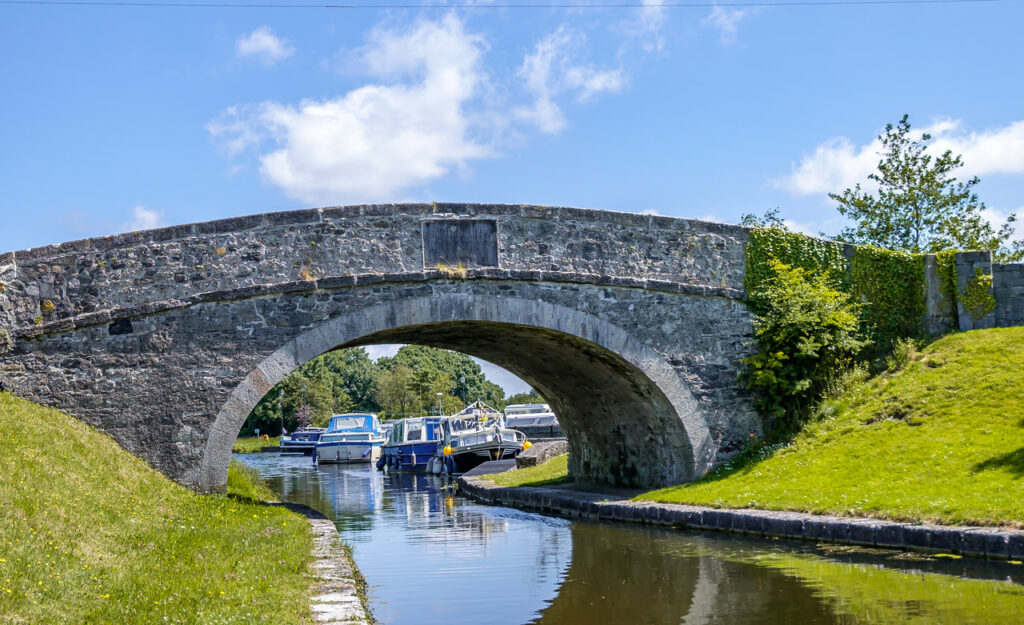
Today, the Grand Canal Way is likely more known to many as a 117km walk that follows the canals that connect Dublin in the east of Ireland with the River Shannon in the west, via Tullamore.
But did you know that the Grand Canal has a rich history, stretching back to the mid-1700s?
The canal was once a significant route for trade and achieving economic progress. Today’s canals are mainly used as pleasure waterways.
Comprising approximately 70km, the Offaly section of the Grand Canal Greenway stretches from Edenderry in the east to Shannon Harbour in the west of the county.
The Grand Canal Greenway is definitely one for your bucket-list, but you’ll have a better appreciation for the walking route, and its surroundings, if you know more about the Grand Canal’s past and its stories.
Here, we share a snapshot of stories and attractions along the canal in Offaly…
Where it all began
While the canal was first planned in 1755, the 127km main line from Dublin to the River Shannon at Shannon Harbour was only completed in 1803.
Tullamore’s own John Killaly, surveyor and canal engineer, played a pivotal role in building the canal. Killaly joined the Grand Canal Company as an assistant engineer in 1794, before becoming the company’s chief engineer in 1798.
Killaly supervised the construction of a section of the Grand Canal near Edenderry. This was probably the most difficult part of the route of the canal, as a major obstacle was the crossing of the extensive Bog of Allen, which lay directly in its path. However, Killaly overcame these challenges. The line of the Grand Canal from Tullamore to the River Shannon at Shannon Harbour was completed and officially declared open on 25th October, 1803.
Killaly went on to receive a silver cup and 200 gold guineas as recognition for his work on the canal!
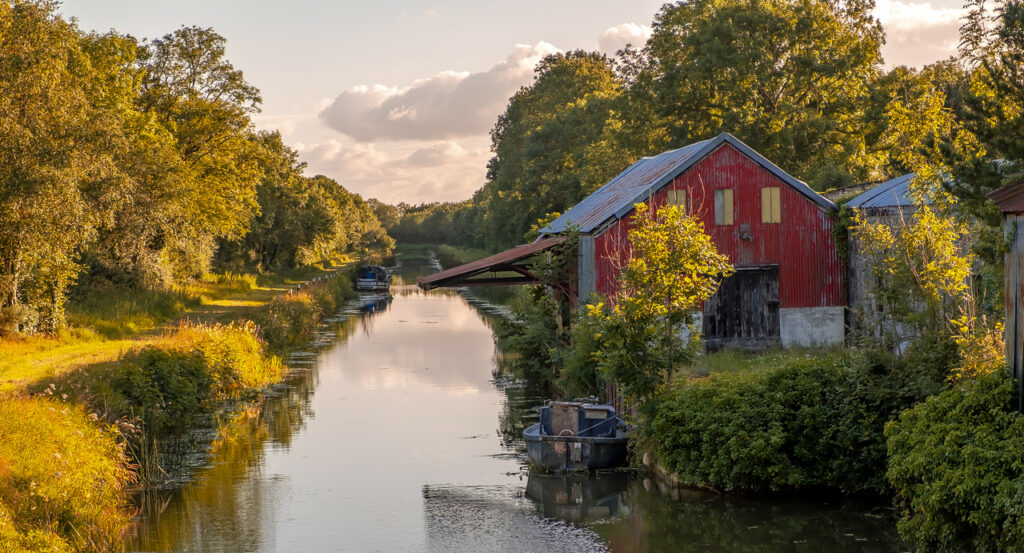
Thriving trading times
It’s known that the Grand Canal was used for trading goods, and it’s approximately 60 years since commercial traffic ceased on the Grand Canal. Turraun, near Lough Boora, had an interesting trading history back in the day.
In the early 1900s, a canal barge called 4B was bought for Leinster Carbonising Turf Company in Turraun, to carry turf from Offaly to Dublin. It’s also said it carried porter, brick, timber, flour, tobacco and general groceries, delivering to shops along the way. After being sold and going through the hands of different owners over the years, 4B has a new owner and now regularly travels the inland waterways.
And, when the Second World War broke out in 1939, even though Ireland was not directly involved, there were coal shortages. G-boats played an important role during what was known then as the Emergency, when fuel was in short supply and the Government sought to have more turf brought to Dublin. It was a boat known as 1G that set out on its maiden voyage to Turraun for its first load of machine-cut turf.
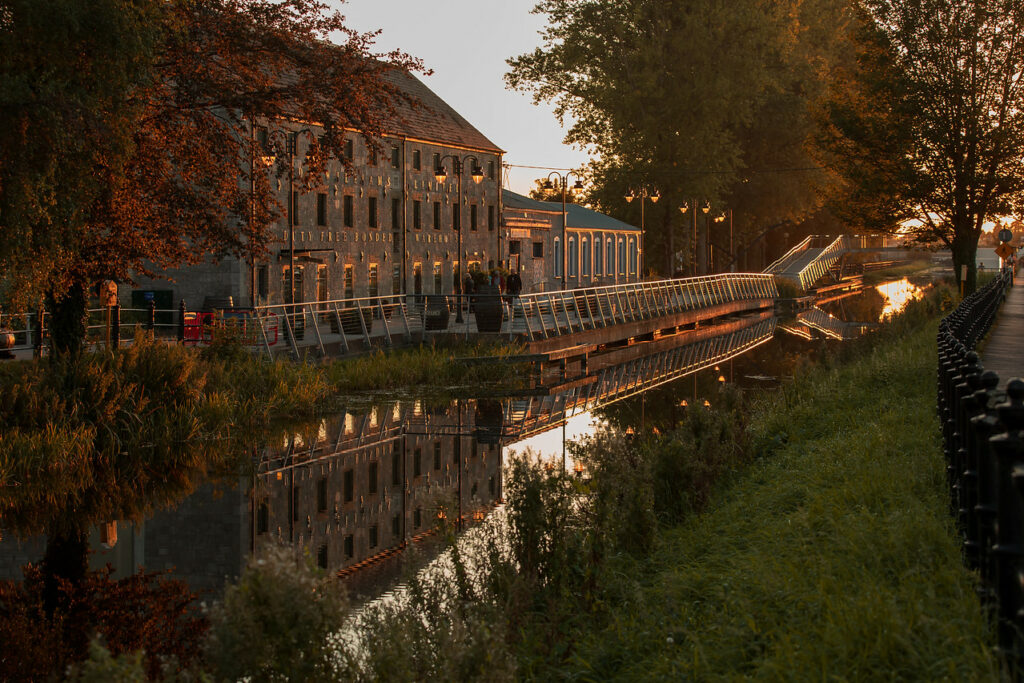
Whiskey wonders
Another thriving industry was the whiskey industry. Tullamore DEW the the famous Irish whiskey of Daniel E. Williams for over 130 years, was significant to the canal and the town of Tullamore. The canal brought in empty casks and coal for the stills, and took away the whiskey to Dublin in one direction and Shannon in the other.
While the old Tullamore DEW Distillery closed in 1954, the brand was kept alive and a new Tullamore DEW distillery built in 2014.
Unlock hidden gems
Along the Canal Way, there are 43 locks. Locks are used to enable boats to pass between upper and lower levels of the water, and are typically closed by watertight gates. Lock-keepers, who had the job of maintaining the locks, were provided with a house situated at the lock.
One unique lock-house can be found just 2km east of Tullamore and it’s called Boland’s Lock. It’s the 26th lock of the Grand Canal and it’s a splendid conical-shaped two-story building, with a combination of rounded ends and a projecting bow from front to rear.
The house is a real hidden gem and a must-see for curious visitors with an interest in old and unusual buildings.
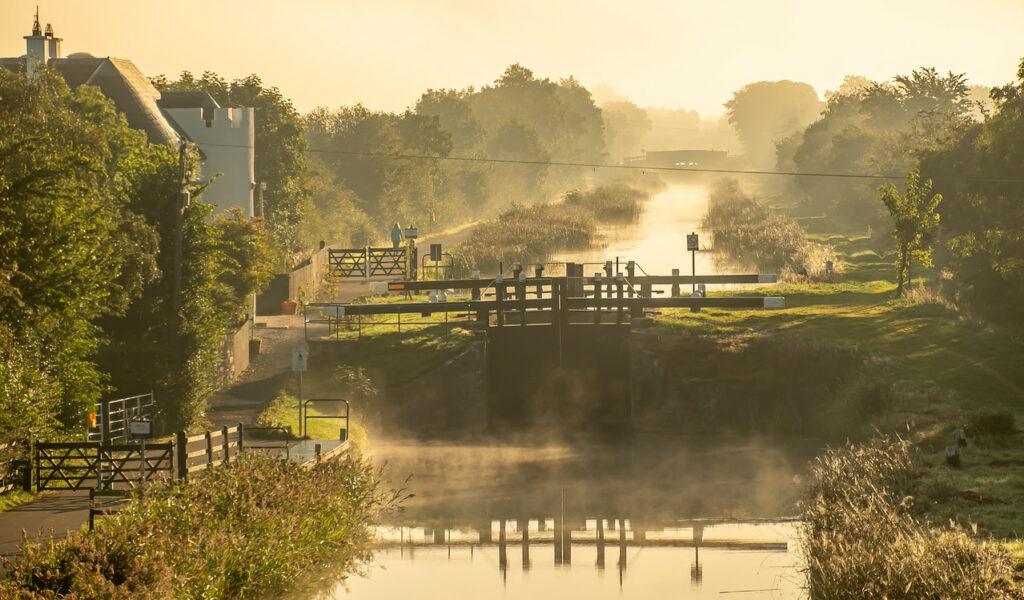
Village life
The Grand Canal extends through the towns and villages of Daingean, Ballycommon, Tullamore, Rahan, Pollagh and Belmont to join the Shannon at Shannon Harbour.
The beautiful village of Shannon Harbour was in fact designed, constructed and operated as a trans-shipping centre. Built in 1830, Shannon Harbour saw 300,000 tons of produce transhipped in its warehouses in one year!
Along with a warehouse, the village boasted a large Royal Irish Constabulary barracks, complete with holding cells, a small school, several taverns and the charming Harbour Masters house. This Georgian house was built back in 1806 to house the Shannon Harbour Master and his family. Since then, the house has been renovated and it still retains its original character.
Back when the canal was created, five hotels were built in tandem with the canal; in Portobello and James Street Harbour in Dublin, Robertstown, Tullamore, and Shannon Harbour. Today in Shannon Harbour, you’ll find the remains of the Grand Hotel, which in its heyday accommodated those passing through. At its peak, 250,000 people would have passed through Shannon Harbour. While less busy than it was in the past, today, the village is home to over 100 private boats, barges and watercraft. It has a new lease of life, attracting visitors interested in fishing and water-based leisure activities.
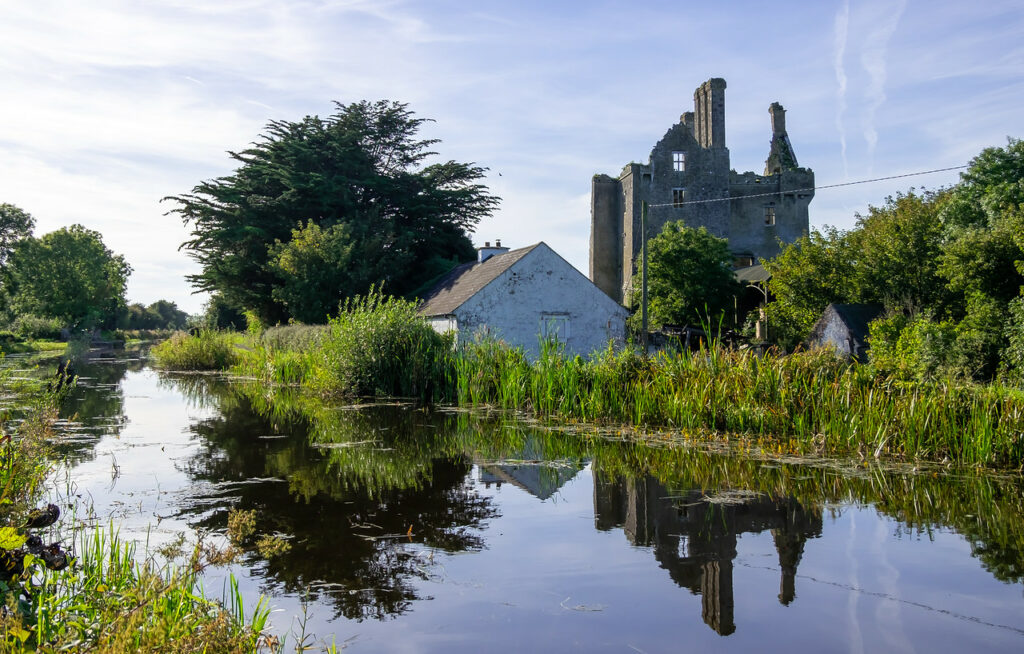
Grand castles
Offaly has its fair share of well-known castles, including Birr Castle Demesne, Kinnitty Castle, the Leap Castle and Charleville Castle. But perhaps lesser-known, are those along the Grand Canal Way.
Although predating the Grand Canal, Ballycowan Castle was built in 1589 as a fortified house by Thomas Morres on the site of a former castle belonging to the O’Molloys, which was destroyed by fire in 1557. The ruins of Ballycowan Castle can be seen from the banks of the Canal and is located about 4km west of Tullamore, and it’s a real gem.
Just outside Tullamore, the canal also passes Shra Castle. This castle was built in 1588 by an English soldier, who married into a local family. The castle can be viewed as you walk along the canal.
Offaly’s Grand Canal way is filled with fascinating history, stories and secrets; you never know what you might discover!
